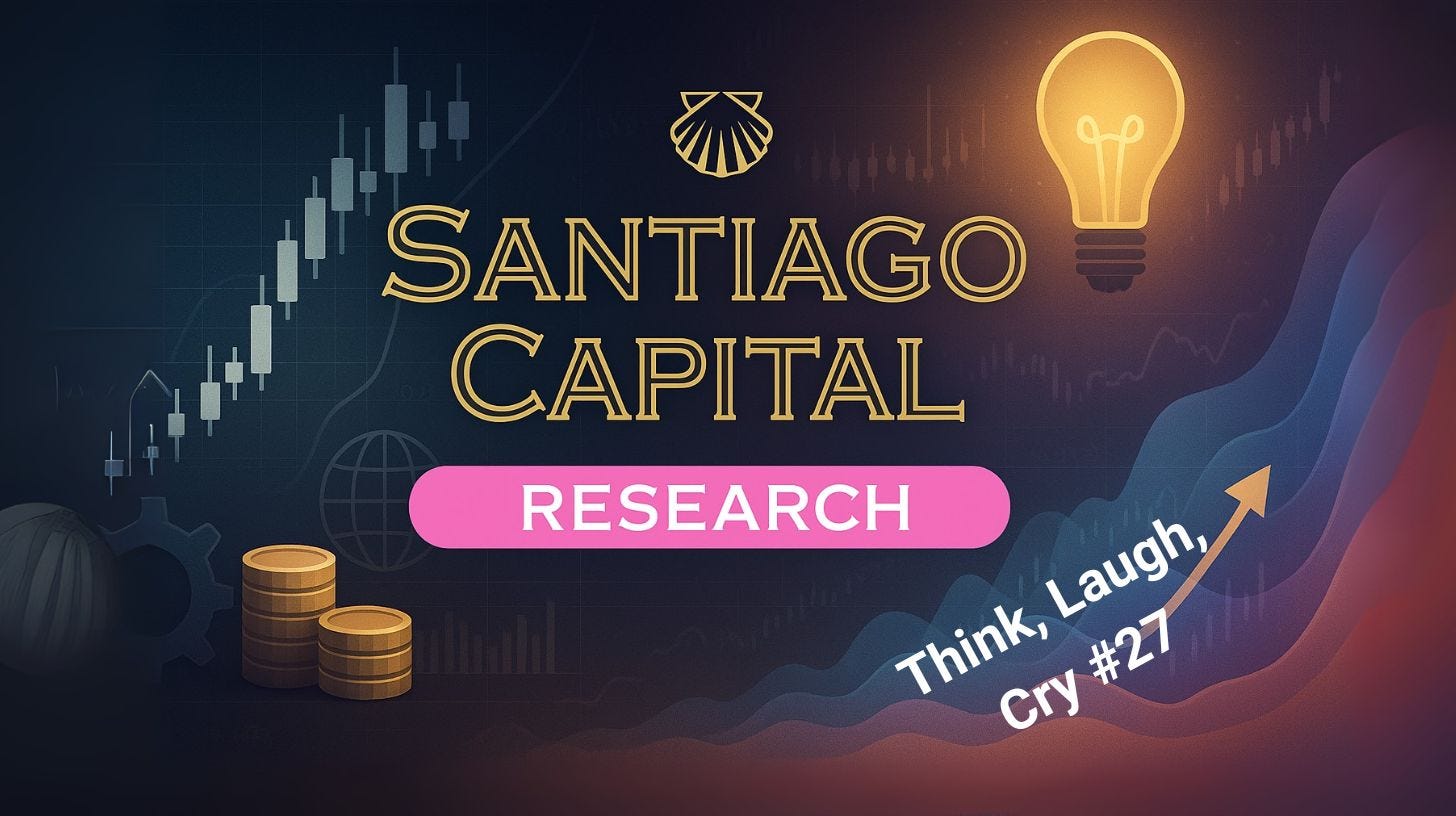Think, Laugh, Cry Issue #27
John Cleese on why play fuels creativity. Hugh Grant’s wit honoring Richard Curtis. A farewell to dialogue with Charlie Kirk. What connects them?
THINK
When John Cleese talks about creativity he strips it of the mystique we usually wrap around it.
To him, it isn’t a rare genetic trait, nor is it the domain of artists, musicians, or savants.
Creativity, he argues, is simply the willingness to play — to set aside the rigid insistence on outcomes and let curiosity lead the way.
This framing is almost childlike, and yet, when you sit with it, you realize it has profound implications not just for art but for how we think, work, and even invest.
Cleese draws a sharp line between what he calls the “closed mode” and the “open mode.”
In closed mode, we are efficient, practical, and focused on solving problems as quickly as possible.
It’s the mode of daily life: making decisions, meeting deadlines, answering emails, balancing budgets.
Closed mode is how businesses run, how governments legislate, and how markets trade. Without closed mode, nothing would get done. But it is a hostile environment for creativity.
Open mode, by contrast, is unhurried, exploratory, even a little childlike. It’s what allows someone to turn an absurd sketch into Monty Python, or a rough idea scribbled on the back of a napkin into a company like Apple.
In open mode, you give yourself permission to wander — to play with ideas, to tolerate ambiguity, to linger in uncertainty without the pressure of producing a “useful” outcome right away.



